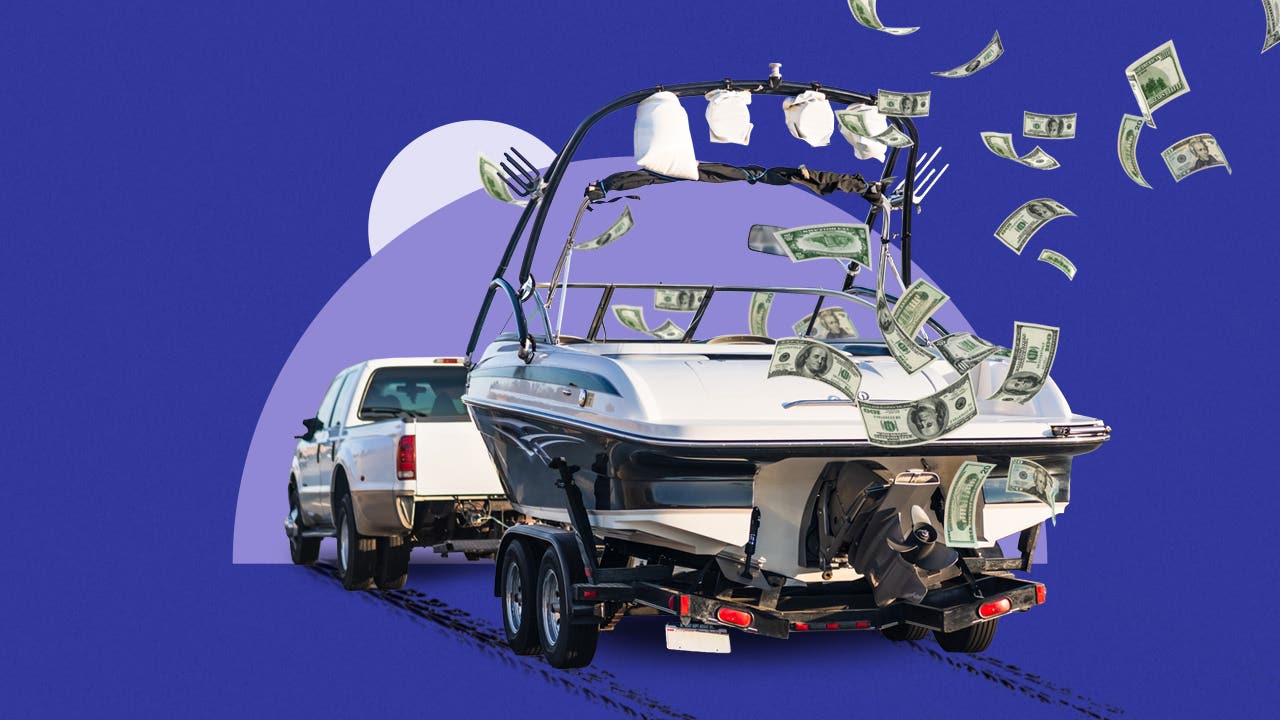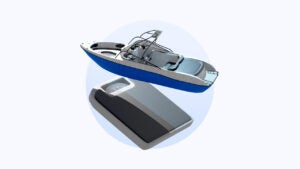How to finance a boat: Lender options and alternatives




Key takeaways
- A boat loan gives you the ability to finance the cost of a boat over several years instead of paying for it all at once.
- A secured boat loan may come with lower rates and longer repayment terms.
- An unsecured personal loan may make financing an older used boat easier.
- Online lenders, credit unions, traditional banks and specialty marine financing lenders may offer a variety of boat loan options.
If your sights are set on buying a boat, you may need to get a boat loan to make that dream a reality. Boat loans are a type of installment loan used to purchase a vessel. These loans can be secured or unsecured and typically have repayment terms between two and 15 years.
While you can get a boat loan from a variety of lenders, securing the best boat loan will depend on your credit score and vessel, among other factors.
How to apply for boat financing
Applying for a boat loan is similar to applying for an auto loan. If you take out a secured loan, the lender will need information about both you and the boat you’re considering purchasing. An unsecured loan, however, doesn’t require you to provide any details about the boat.
1. Check your credit score
When you are considering buying a boat, be sure you know your credit score. Lenders check your credit score to determine your creditworthiness. Secured boat loans may require higher credit scores than auto loans since boats are considered luxury purchases.
The higher your score, the lower your interest rate. You may also receive more flexible terms, larger loan amounts and a smaller down payment requirement. If your score isn’t in the good-to-excellent range, you may want to focus on unsecured personal loans to finance your boat.
In addition to your credit score, lenders consider your income, employment history and debt-to-income (DTI) ratio to determine whether you qualify for a boat loan.
2. Calculate how much you need to borrow
If you’re looking at a boat in a particular price range, use a boat loan calculator to get an idea of how much your payment will be. Compare the monthly payments based on the potential loan term and interest rates you may qualify for.
A short term will pay your boat off faster with less total interest, while a longer term will have a lower monthly payment but cost more over time. Include costs such as taxes, registration, insurance and ongoing maintenance in the total loan amount — unless you plan to pay those costs in cash.
3. Gather the required documentation
You will need common financial documents to apply for a boat loan, including:
- Recent pay stubs
- W-2s or tax returns
- Brokerage account statements
You should also have proof of residence and a government-issued photo ID. For secured boat loans, your lender may require you to have information about your boat — though you may be given time to shop around before you complete a full application.
Online lenders usually allow you to upload your documents, and certain banks and credit unions may also allow digital copies. To prevent delays, make sure you take legible pictures or scans of them.
4. Prequalify and compare lenders
Try to work with lenders that offer the option to prequalify for a boat loan. When you prequalify, lenders will show you the rates and terms you could receive after submitting a full application.
Although prequalifying doesn’t guarantee approval, it allows you to compare potential offers without a hard inquiry on your credit.
5. Submit a full application
After choosing a lender, you’ll generally finish the application process online. You may receive a loan decision within a few hours or a few days, depending on the type of lender you’re working with and whether you got prequalified first.
If you’re borrowing a secured loan, you may have to wait for a marine survey report. This report assesses the boat’s value, similar to how a home appraisal estimates the value of a home.
The lender will run a hard credit check and may ask you for additional documentation before finalizing your loan paperwork. Funds are usually directly deposited into your bank account or sent to the dealer, depending on whether you apply for an unsecured or secured loan.
Where to get a boat loan
Compare at least three lenders to see which rates and terms work best for your boat purchase. Ask about secured and unsecured options — the rates and terms may differ significantly depending on your choice.
Banks or credit unions
If you prefer in-person service and want to have all your accounts in one place, check boat loan options with your local bank. If you’ve had an account for several years, your bank may offer loyalty discounts on interest rates and fees related to boat financing.
However, you’ll typically need to meet higher credit standards and the loan process may take longer than other types of lenders. If you’re in a hurry to set sail or want to move quickly on a purchase, a bank may not be the right choice for you.
Credit unions can also be a good source for boat loans if you’re a member or are willing to join. You may be eligible for membership perks that are similar to those offered by banks, like lower interest rates and fees. Credit union loan approval requirements may be more relaxed than those from traditional banks, although you’ll generally need a fair or good credit score to qualify.
Online lenders
Online lenders specialize primarily in unsecured personal loans that can be funded quickly. They often have quick approval processes that require little documentation compared to other options.
You may also find more options for bad credit, although you’ll pay much higher rates than other boat loan types. That said, if you have excellent credit, you may also find some of the best personal loan rates online. Personal loans are a good option if you are confident you can afford the payments, are buying a used boat or can’t qualify for traditional financing from a bank or credit union.
Alternatives to taking out a boat loan
Boat loans can help spread out the costs of purchasing a vessel and make the initial investment more affordable, but there are also some cons. For instance, many lenders charge origination fees on top of interest, resulting in a higher overall cost.
If you have less-than-stellar credit, you may also end up with a high interest rate and large monthly payment, which could increase your chances of defaulting on the loan. That said, there are other ways to purchase or use a boat if you don’t want to take out a boat loan.
- Paying cash for a boat is the cheapest option because you don’t pay interest charges or loan fees. However, ensure you have enough remaining cash to maintain an emergency fund and accomplish other financial goals before considering this option.
- Renting a boat may be more cost-effective if you’re only on the water occasionally. Aside from savings on loan costs, you won’t need to pay to store, maintain or insure it.
- Boat dealerships often offer in-house financing. This may be a convenient way to buy and finance your boat in one place, but you should still compare the financing terms with other lenders to ensure you’re getting the best deal.
Bottom line
A boat loan can be a great way to afford boat ownership, as long as the financing terms make sense for your budget. Decide how much you want to spend and stick with a boat price that keeps your monthly payment affordable. Don’t forget to budget for the ongoing costs of owning a boat, like fuel, maintenance, docking, storage and insurance.
You may also like


How to choose the best boat loan lender

Boat loans for older boats vs. new boats

